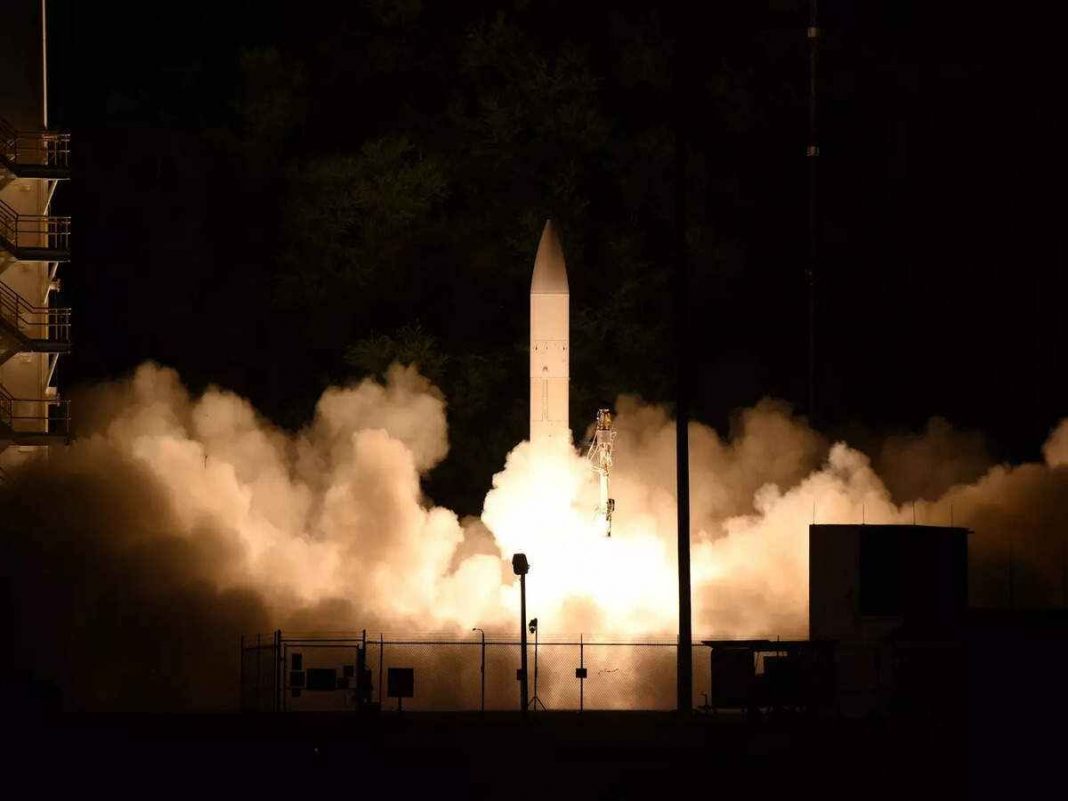The United States, the United Kingdom, and Australia stated on Tuesday that they would collaborate on the development of hypersonic missiles under the newly formed security alliance known as AUKUS, which was established last year.
According to the United States and its allies, the action comes amid rising worry over China’s growing military aggression in the Pacific. The announcement came after President Joe Biden, British Prime Minister Boris Johnson, and Australian Prime Minister Scott Morrison met to review the progress of AUKUS, the Indo-Pacific alliance that was launched by the three countries in September. Biden, Johnson, and Morrison discussed the plan during the meeting.
Their commitment was expressed in a joint statement, which stated that they are “committed today to launching new trilateral cooperation on hypersonics and counter-hypersonics, as well as electronic warfare capabilities, as well as expanding information sharing and deepening cooperation on defence innovation.”
America, Russia, and China have all shown an interest in further developing hypersonic missiles, which are capable of travelling at speeds faster than any existing missile defence system.
Chinese military officials confirmed in October that a hypersonic weapon system had been tested as part of their aggressive effort to advance in space and military technologies. Gen. Mark Milley, chairman of the Joint Chiefs of Staff, said the test was part of China’s aggressive effort to advance in space and military technologies.
The Chinese test, according to Milley, was “a very major event in the history of testing hypersonic missile systems, and it is quite frightening.” Milley spoke with Bloomberg Television about the test.
After growing concerns from American intelligence agencies about Russia’s massing of forces along its border with Ukraine, Russian President Vladimir Putin urged the country’s arms manufacturers to develop even more advanced hypersonic missiles in order to maintain the country’s technological edge. The United States has been concerned about Russia’s massing of forces along its border with Ukraine since the summer of last year.
It has been claimed by the Russian military that their Avangard missile system is capable of flying 27 times faster than the speed of sound and performing sharp rotations on its route to a target in order to avoid the enemy’s missile defence systems. As an alternative to older-generation warheads, it has been installed on existing Soviet-built intercontinental ballistic missiles, and the first unit to be equipped with the Avangard went into service in December 2019.
According to Russian authorities, the Kinzhal, which is carried by MiG-31 fighter planes, has a range of up to 2,000 kilometres (approximately 1,250 miles) and can travel at speeds up to ten times the speed of sound.
Currently, the Pentagon’s proposed budget for fiscal year 2023 contains $4.7 billion for research and development of hypersonic weapons. It includes plans to have a hypersonic missile battery operational by next year, a sea-based missile operational by 2025, and an air-based cruise missile operational by 2027, among other things.
President Biden, Vice President Johnson, and Military Secretary Morrison have touted the launch of AUKUS as an opportunity to increase the sharing of defence assets. As its first significant step, the alliance announced that it will assist Australia in the procurement of nuclear-powered submarines.
Deputy Prime Minister Scott Morrison said the development of hypersonic missiles was consistent with Australia’s strategic strategy, which was unveiled two years ago and aimed to improve the military’s long-range attack capabilities.
Because of the escalating threats presented by Russia and China, Australia’s Defense Minister, Peter Dutton, has previously revealed intentions to spend $2.6 billion to buy long-range attack missiles for fighter planes and warships years ahead of schedule due to budget constraints.
Concerns have been raised regarding a potential Chinese naval presence 1,200 miles off the coast of northeast Australia as a result of a proposed security agreement between the Solomon Islands and China. The Solomon Islands administration has said that it would not allow China to establish a military facility there, while China has denied that it is attempting to establish a military presence in the islands.

